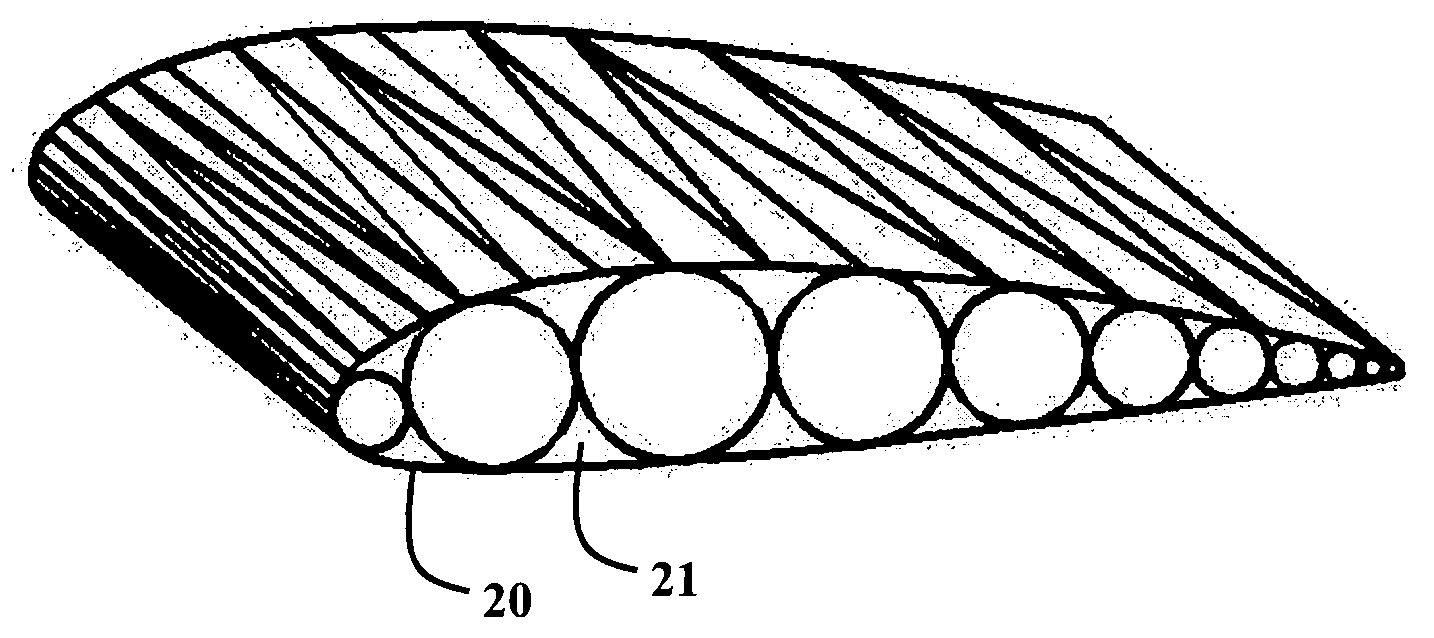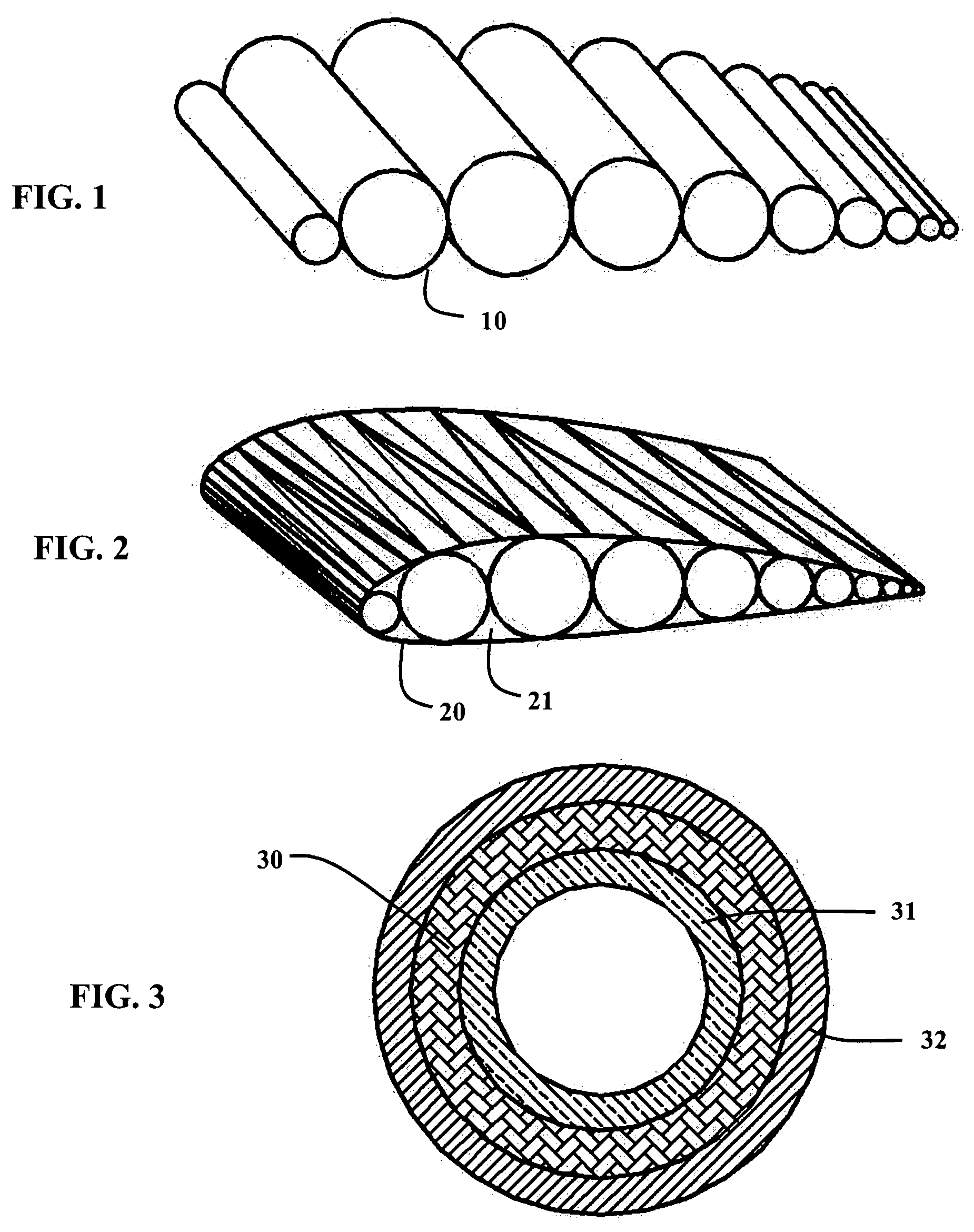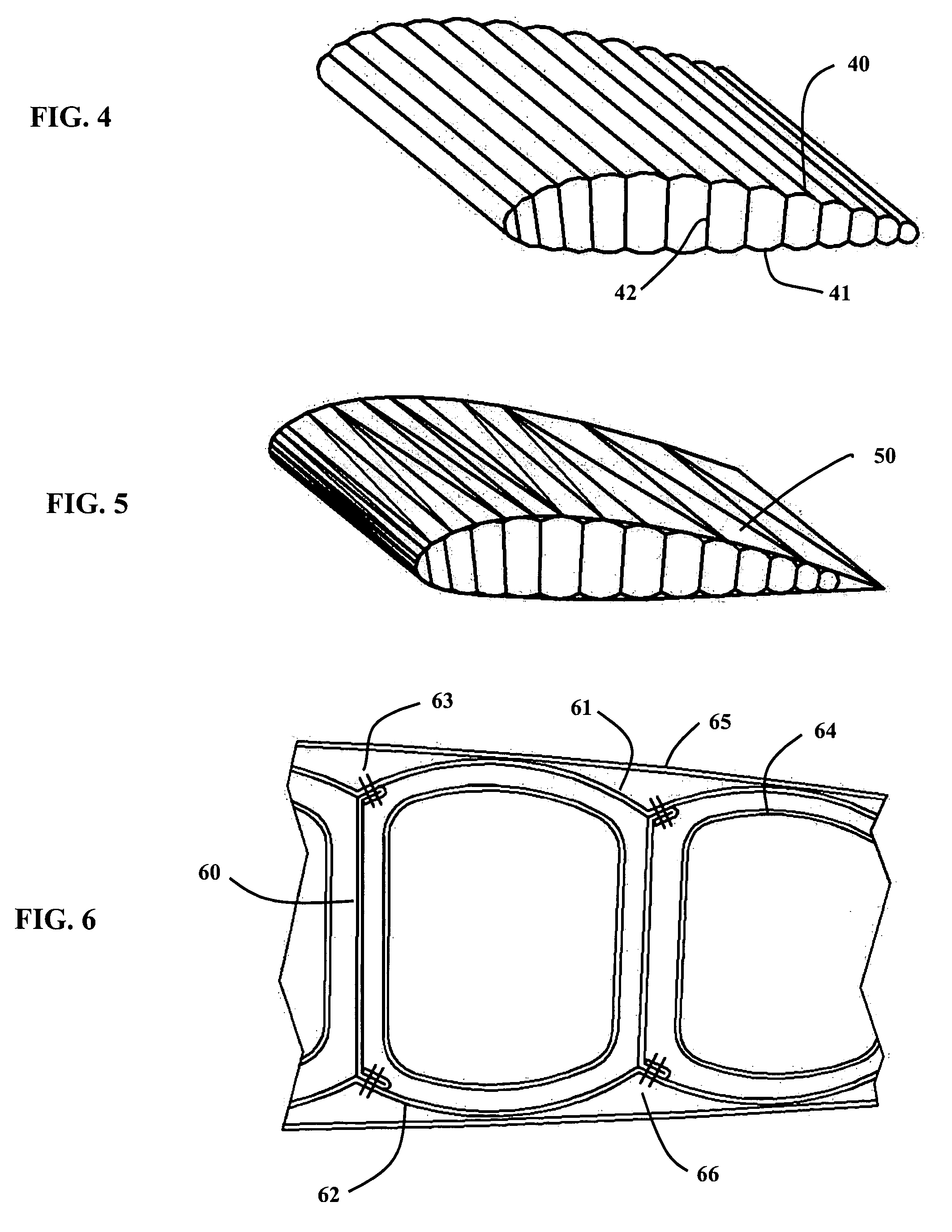Deployable, rigidizable wing
a technology of wing and wing body, applied in the direction of aircraft, wing shape, transportation and packaging, etc., can solve the problems of not being rigid, not being able to bear a portion of structural load, not being supported, etc., to achieve favorable aerodynamic characteristics, increase the rigidity, and the effect of increasing the aspect ratio
- Summary
- Abstract
- Description
- Claims
- Application Information
AI Technical Summary
Benefits of technology
Problems solved by technology
Method used
Image
Examples
Embodiment Construction
[0025] Three embodiments of inflatable / expandable, rigidizable wings are described below. For purposes of the description, the rigidizing technique described is based on an light cure (photo-initiation) rigidization mechanism. It is understood that this is but one of several cure mechanisms upon which the rigidization process can be based. For example, any type of light capable photo-initiating rigidization process, i.e., ultraviolet, visible and infrared light, can be used, or the gas used to expand may be, or may contain a curing agent to rigidify the wing. Such curing agent-containing gas may also be introduced to the wing after it has been fully expanded. Further, the means of deployment described is based upon the use of an inflation gas. However, it is understood that other means of deployment could be used, such as mechanical linkages, shape memory materials, and so forth.
[0026] As used throughout the specification and claims, the term “self supporting” means without the nee...
PUM
 Login to View More
Login to View More Abstract
Description
Claims
Application Information
 Login to View More
Login to View More - R&D
- Intellectual Property
- Life Sciences
- Materials
- Tech Scout
- Unparalleled Data Quality
- Higher Quality Content
- 60% Fewer Hallucinations
Browse by: Latest US Patents, China's latest patents, Technical Efficacy Thesaurus, Application Domain, Technology Topic, Popular Technical Reports.
© 2025 PatSnap. All rights reserved.Legal|Privacy policy|Modern Slavery Act Transparency Statement|Sitemap|About US| Contact US: help@patsnap.com



